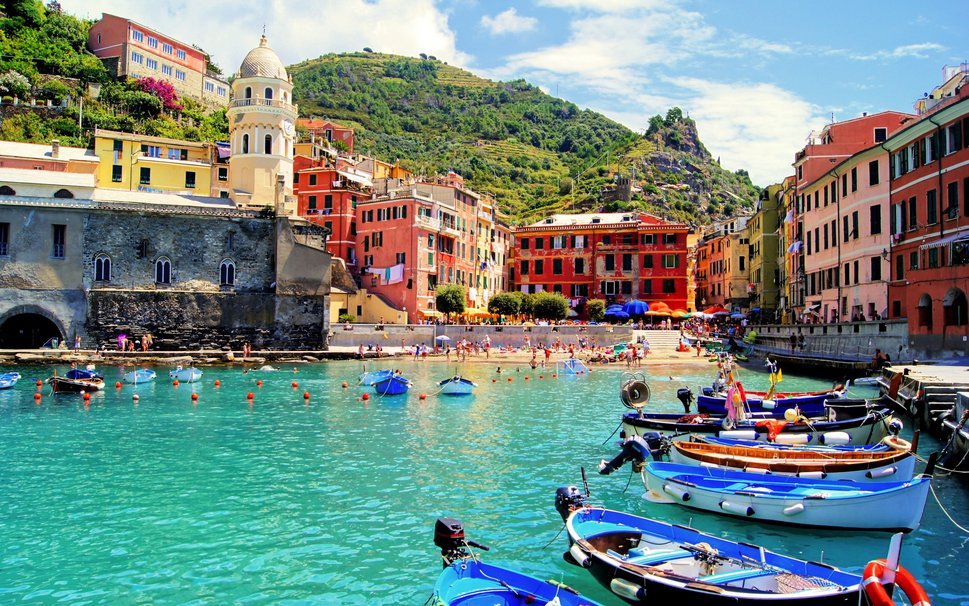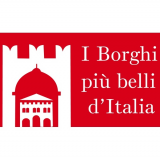
 I borghi più belli d'Italia
I borghi più belli d'Italia
Italian Little Italies: Vernazza, Wedged Between the Sea and the Rock of the Cinque Terre
- WTI Magazine #76 Feb 14, 2016
-

 I borghi più belli d'Italia
I borghi più belli d'Italia
WTI Magazine #76 2016 February 15
Author : I borghi più belli d'Italia Translation by:
As we approach Vernazza from the sea, its small piazza seems to slowly open its arms to greet us. We come ashore, and the small harbor, where the Romans once came to take on board the famous Vernaccia amphorae, seems to close around us, sheltering us from the sea winds and welcoming us inside u cantu de musse, the conversation corner: the small piazza still bears this name. Here, facing the Mediterranean sea and relaxing and chatting with others, one seems to return to the basics of life. The church standing in this piazza seems to defy the waves as they come in from the sea.
Dedicated to Saint Margaret of Antioch, the church was constructed in Gothic-Ligurian style. It presents two unusual features: the octagonal tower, 40 metres high, looks more like a minaret than a bell tower (the only element missing is the muezzin calling people to prayer), while the entrance is located in the apse rather than in the church's façade. The interior has a basilica plan with a nave and two aisles and makes charming use of slate, the local black rock. On the right-hand side of the apse there is a splendid 15th-century gothic tabernacle.
The harbor is framed by this church and by the cylindrical watchtower of the ancient Doria castle, which together with the square watchtower is all that remains of the ancient anti-corsair defensive works of the Republic of Genoa.
Apart from the terraced houses typical of seaside villages, which seem to sprout one from the other for defence purposes, the upper part of Vernazza is all porticoes, arcades and steep narrow lanes overhung by arches linked by stairways leading to other stairways. The carruggi (alleys) and houses lit up by the sun seem to long for the water, to lean forward and dive into it.
Some of the most beautiful pathways of the Cinque Terre branch out from this small piazza, in particular those leading to the sanctuary of the Madonna di Reggio, erected in the 11th century and housing a black Madonna, according to legend brought by returning crusaders, and the path which leads to the church of Saint Bernardino, where the observer can take in a sweeping panorama running from Corsica to the Maritime Alps.
In the village of Corniglia, which can be reached via a scenic path, one can admire the Gothic-Ligurian church of Saint Peter (1334), with its 12th-century baptismal font and façade bearing a rose window in white Carrara marble. All around are the typical Mediterranean vegetation, sky, sea and the serenity of the Riviera.
The name
The name is thought to derive from the Latin adjective verna, meaning "of the place" or "indigenous".
Thus the village's name would be linked to its most famous product, Vernaccia, the local wine.
Others maintain that the place name comes from a Latin predial, Vulnetia, indicating a family that owned land.
The product
On the picturesque terraces cut into the rock and cliffs, the natives have for centuries cultivated pergola vineyards which yield excellent wines: the DOC wines include the white wine of the Cinque Terre and Schiacchetrà, the most famous raisin wine in Italy, of which only a very small quantity is produced every year. The region also produces PDO extra-virgin olive oil and fragrant lemons.
The recipe
Trofie with pesto sauce. Trofie are a pasta made of wheat (or chestnut) flour formed into corkscrew shapes, something between the ancient Roman pultes (polenta) and the more modern spaghetti.
Genoa's pesto is an ancient Mediterranean product as well: basil, olive oil of the highest quality, pine nuts, marjoram and grated cheese.